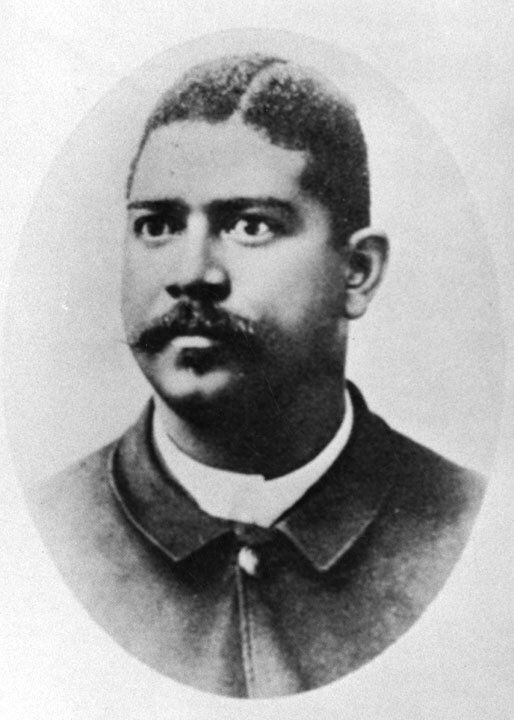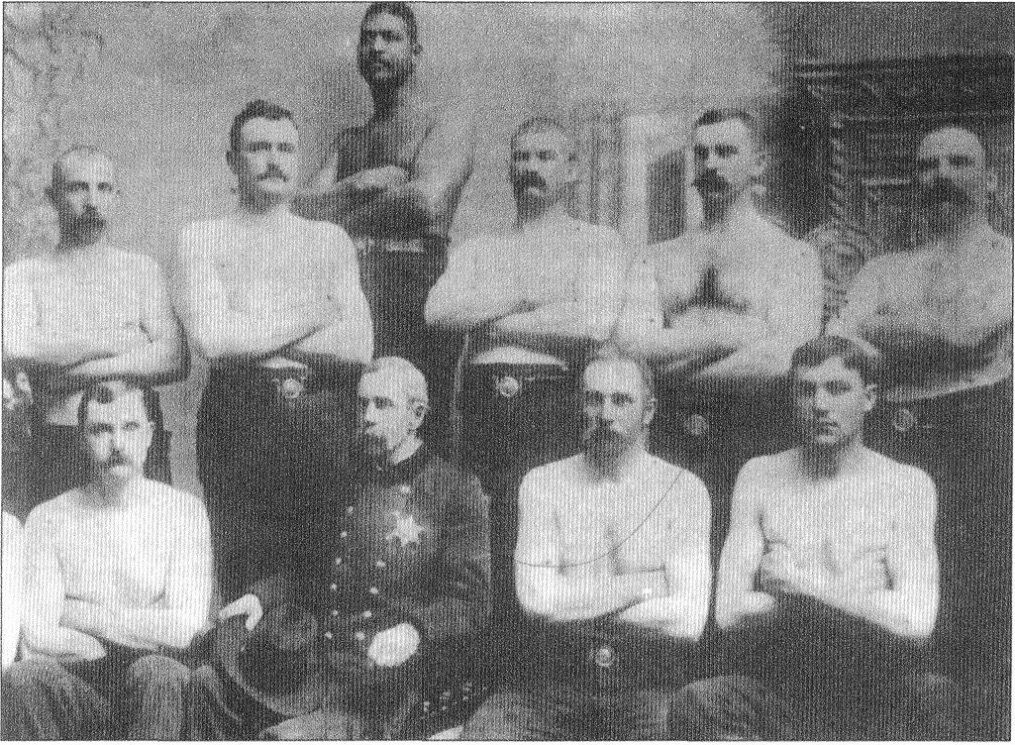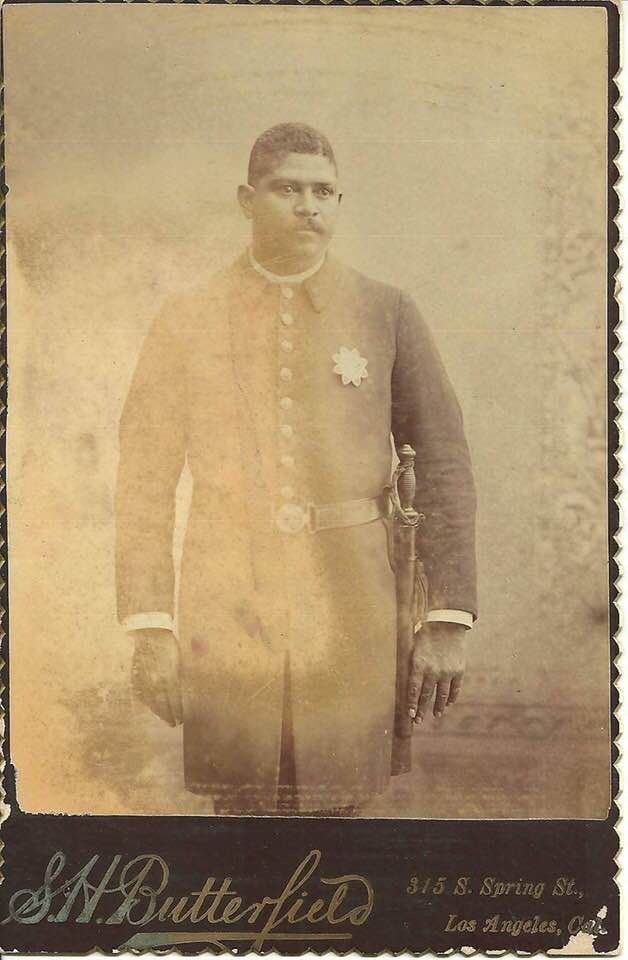EDITOR'S NOTE: This is a collaboration between digital journalist David Mendez and anchor/multimedia journalist Kate Cagle. Click the play button above to watch the video report that accompanies this story.
UPDATE: Los Angeles Police Chief Michel Moore has responded with a statement, promising that LAPD will posthumously give Robert W. Stewart an honorable retirement. See his full statement below. (Sept. 29, 2020)
LOS ANGELES — In 1889, the Los Angeles Police Department pinned a badge to the uniform of a formerly enslaved man, Robert William Stewart, installing the department’s — and possibly the state’s — first Black patrolman.
Eleven years later, Stewart's career and reputation were taken from him when he was accused of raping a white teenager. He was eventually acquitted, but he never regained his job, working as a laborer and custodian until he died in 1931, at age 81.
What You Need To Know
- In 1889, Robert W. Stewart and Joseph H. Green were the first two Black officers appointed to the Los Angeles Police Department
- Stewart, who was born enslaved, was lauded in newspapers for his ability and personality
- Stewart's career ended in 1900 when he was accused of rape by a white 15-year-old girl; although he was eventually acquitted, he never regained his badge
- Historians are seeking to ensure that Stewart and Green's stories will be properly acknowledged
Although LAPD has continued to name him as the first Black officer in the department’s history, very little detail has been available – and even some of those details, such as his hire date, are wrong.
Then, about 2015, historian and architecture buff Mike Davison stumbled across Stewart’s name.
“I was researching the history of an old building that has been used as L.A. City Hall — not the one now, and not the one before that, but the third building,” Davison said, at the corner of South Second Street and West Spring Street.
After City Hall moved (again), the building stood as police headquarters for 11 years. There, Davison learned, was where LAPD’s first Black police officers — Stewart and Joseph Henry Green — worked.

But in his initial searches for more, Davison found that each source had the same information: that Stewart started at LAPD in 1886 (which he later found to be incorrect), that he was on the force for a few years, and that no one quite knew what happened after that.
Davison got to digging. Everything he found went onto his blog, “Previous Los Angeles.” Although his research on Stewart has been published in a few places — including the Los Angeles Police Museum’s newsletter — he’s had very little luck getting Stewart’s name back into the world.
Yet his research is considered authoritative by John Thomas, the chief of the Department of Public Safety at the University of Southern California. Thomas is a 21-year veteran of the LAPD, having retired in the mid-2000s, and a scholar of the LAPD’s Black history in his own right. He once took a hack at researching Stewart’s time with the department, but repeatedly hit pre-digital age roadblocks.
“[Davison] did an outstanding job of writing and chronicling not only his story, but where he lived; it’s just incredible,” Thomas said.
Davison and his colleagues were able to collect a record of Stewart’s accomplishments without his own, first-hand accounts. It’s not clear if Stewart kept a diary or any records of his thoughts; if he did, they have not been found. Instead, much of his history was detailed in official documents and newspaper records.
“He was very courageous to take the job that he did, and I think it took courage just to leave Kentucky,” Davison said. “He suffered what happened to him in silence…he’s a pioneer. He should be remembered like Biddie Mason or any of the other early African Americans in Los Angeles.”
Robert William Stewart was born on March 1, 1850, in Garrard County, Ky., as the eldest of 11 children — or at least, that's the best estimation: Stewart was born in slavery and believed to have been the property of farmer Sabritt Doty.
After the Civil War and the abolition of slavery, Stewart married a formerly enslaved woman, Louise Coffey, in Lincoln County, Ky. Stewart arrived in Los Angeles by 1886, where he got settled before sending for his wife and their son. While he worked many jobs, his local Colored Republican Club activity gave him stature.
"I saw Negroes sold on blocks, like cattle, and I know what a great boon freedom is. Some say they won't vote the Republican ticket because they have not been able to become spittoon-cleaners," Stewart said to the club, according to Davison. "I don't want office — I want liberty. I have just as good muscle as anybody."
The mention of "spittoon-cleaners," Davison notes, refers to patronage appointments, from powerful politicians to friendly, like-minded supporters. The Colored Republican Club was, indeed, a political force at the time, helping to sweep Republican politicians into office. When it came time for those politicians to make political appointments, the CRC wanted their due.
At this time, police positions were subject to annual approval and re-approval by the city's police commission. Appointments at the time were even released in lists separated by Democratic and Republican appointments.
On March 31, 1889, Stewart and Green's names were published in the Los Angeles Herald as the last in a Republican police officer appointees' list. The two had become the first Black police officers in the city of Los Angeles.
Initially, neither man was held in high regard. A letter to the Los Angeles Times, in April 1889, chastised the department for not properly utilizing them, asking "why they should be relegated to janitor duty in the city buildings?"
Before long, Stewart was given a post directing traffic at the intersection of Spring and First streets, then one of the city's busiest intersections.
Green's career with the LAPD did not last long. Little more than a year after his appointment, he was one of nine officers laid off when the department was ordered to reduce its numbers. He died in 1903, survived by a wife and two daughters. He is buried in Evergreen Cemetery, and in the century since his burial, his headstone has fallen over and rests face down.
Stewart's career was lauded in the press. Newspaper articles described both his arrests and court appearances and the fascination the public had with seeing a "colored giant in blue." He was wildly popular as a subject and well-respected in the community; newspaper clippings included Stewart's testimony for a rheumatism treatment, as well as his love for raising chickens. And in 1892, Stewart resigned from the LAPD to run as a Republican for one of two positions as a county constable, as the region's first major-party Black candidate for elected office. (Stewart finished third in the race. He was reappointed as a police officer early in 1893.)
But those same articles celebrating Stewart stung of racist slang and stereotypes: one article supposed that not even "the proverbial thickness of an African's skull" might have protected Stewart from a thrown bottle.

One report also told of white men refusing to help Stewart, even allowing a fleeing suspect to escape despite the officer's calls for help.
"Officer Stewart is the only colored man on the force, but he has a record for bravery and good conduct that has never been questioned," that article concluded.
The record changed on May 10, 1900.
That day, as he prepared to patrol his beat, Stewart was arrested by LAPD detectives and charged with the rape of Grace Cunningham, a white 15-year-old girl.
According to a report published in the Los Angeles Times, Cunningham told officers that Stewart ran into her after the night's juvenile curfew had started. He offered to walk her home, she said, then took her to the Spring Street School grounds and assaulted her. A fellow police officer claimed to have seen the two talking and later needled Stewart about it.
In that same article, Stewart was quoted as saying that he did meet and speak with a girl while walking his beat, but that he did not walk her home, and that he likely wouldn't even be able to recognize her.
His pretrial hearings had considerable public and media attention, and spectators packed courtrooms. In those hearings, Cunningham's story changed; she said Stewart had propositioned her for sex, and that she stayed out talking to a tamale vendor for hours after the assault, rather than running straight home as she previously claimed.
After his preliminary hearings, Stewart was placed in jail on $3,000 bail until trial.
While he was in lockup, the city's Police Commission voted, 3-2, to fire Stewart without allowing him to defend himself — only after voting to provide themselves with the power to fire an officer.
Stewart's first trial lasted a week, from Oct. 22 to Oct. 29, and reports from the trial said Stewart represented himself well. "If I were to meet my God in the next minute, I would swear that I have not harmed that young girl," the L.A. Herald quoted Stewart as saying on the stand. His defense attorneys also argued that Cunningham laid out an impossible timeline for the assault, given other confirmed facts and witness accounts of the night.
The first trial ended with a hung jury, 7-5, in favor of acquittal. A second trial was soon set for Dec. 27.
The details of the second trial were not as extensively reported, but on Dec. 31, 1900, Stewart was found not guilty and was "so delighted he could hardly contain himself to thank each particular juror," the Times reported.
Davison was unable to find any reports seeking to return Stewart his badge. For the rest of his life, Robert W. Stewart worked as a janitor and a laborer. He died on July 27, 1931, at 81 years old. The Times mentioned his passing only in a list of death notices.
But the California Eagle, a newspaper reporting on the Black community, ran a front-page banner headline proclaiming him a pioneer on July 31.
"Mr. Stuart (sic) was one of the first colored peace officers in the state…after his appointment, others followed, and ever since that time, the city has had colored officers," the Eagle wrote. "Known far and wide for his staunch and dependable character, Mr. Stuart (sic) was honored for his integrity and public spirited citizenship.”
Despite their best efforts, neither Davison nor retired LAPD Lt. Rita Knecht, a genealogy specialist, have been able to find living descendants for Stewart, his wife Louise, or their son, William. The family is interred at Evergreen Cemetery; Robert and Louise share a plot under a headstone with his picture in an older, northeastern section of the cemetery. William's grave rests a few plots away from his parents, without a marker.
Stewart's story has largely been left to historians.
"He was pretty much forgotten," Davison said, frustrated that for years he had little luck in getting out the word of Stewart's life. "He's a big name — the first (Black) cop, the first to run for office under a major party, the injustice of how his career ended. He should be more known…I hope he gets his due.”
He still just might, if historians have anything to say about it.

Earlier this year, Davison and Knecht put together a set of biography packages for the police museum, including stories on Stewart and Green, to highlight LAPD's unsung trailblazers.
"The museum was working with the department to put together that kind of a program when the pandemic hit," Knecht said. "So I think they'll get back to it, it's just a matter of time and getting through the pandemic."
USC Chief Thomas said he believes that now, amid ongoing debates of race and policing, is the perfect time for the LAPD to recognize Stewart and his history as a pioneer within the ranks of the department.
"I couldn't think of a better time for this piece of tragic LAPD history to come out," Thomas said. He believes that LAPD Chief Michel Moore is supportive of telling Stewart's story and honoring his contributions to the department.
When reached by Spectrum News, Chief Moore's office issued the following statement:
"I am very familiar with the story of the Los Angeles Police Department’s first African American officer. Robert William Stewart, who was born into slavery, moved to California and joined the LAPD in 1889. He was an exemplary officer and he embodied each of the core values officers still strive to live up to today.
Officer Stewart’s improper termination for an allegation he was proven innocent of was all the more unjust when compared to his stellar work history and personal character.
The LAPD is committed to confronting its past and correcting for past missteps. As part of that commitment, Officer Robert William Stewart’s contribution to the LAPD and the communities he served will be formally recognized. It is my intention to ceremoniously reappoint Officer Stewart and provide him the honorable retirement he was previously denied. We will also memorialize Officer Stewart’s life by naming a classroom or other prominent location within the Department’s facilities in his honor."
Thomas's scholarship of Black LAPD history is extensive. He worked to secure a headstone in Evergreen Cemetery for Charles P. Williams, the first Black LAPD officer killed in the line of duty, and is regarded as an expert among his fellow officers. He knows that the LAPD hasn't always been righteous, and that frustration with the department's practices led even future Los Angeles Mayor Tom Bradley to quit policing.
"To say that law enforcement hasn't come a long way is not true. But the institutional racism that's embedded not only in law enforcement but in all institutions is still there," Thomas said, recalling times when he, as a Black man in civilian clothes, would be pulled over. Those interactions quickly change tone when officers discover not only that he's also a cop, but that he's a chief of police, he said.
When Thomas reflects on Stewart's story, he's fascinated that Stewart rose from an enslaved life in Kentucky to join the great post-Civil War migration west — and that, despite his station as a superlative police officer and a respected community member in Los Angeles, he lost nearly everything based on an unproven accusation.
"He never got his job back, but he laid a pretty solid foundation, and that foundation was that, yeah, a Black man can do this job," Thomas said. "We all owe him a debt of gratitude. Even despite the tragedy, he was like Jackie Robinson. He proved that he did belong."



